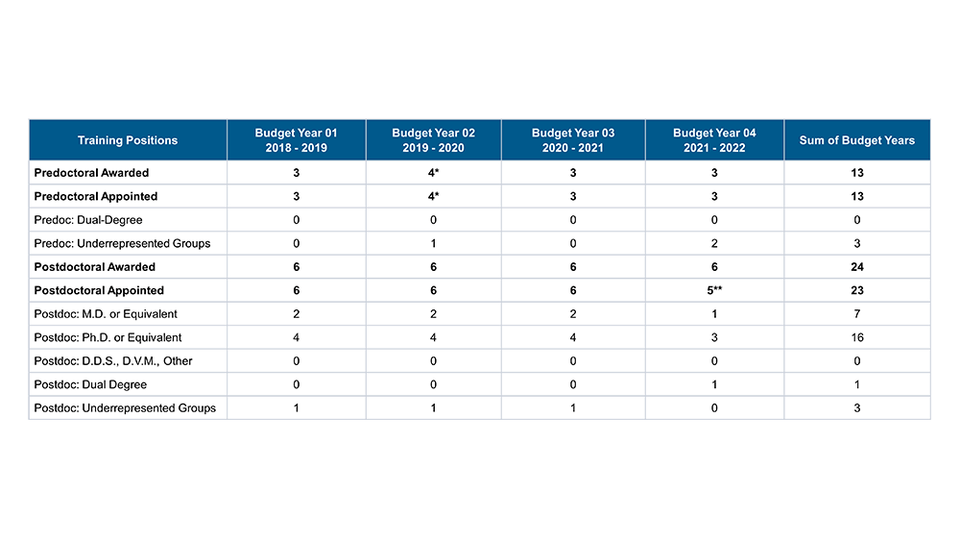Table 7. Appointments to the Training Grant for Each Year of the Current Project Period (Renewal/Revision Applications Only)
Overview
This table provides an overview of the current program’s past success and allows evaluation of awarded training positions.
Overall Instructions
-
Participating departments should match primary departments/programs reported in Table 2.
- If the number of appointed trainees in a budget year does not match the number of slots awarded by NIH, include a footnote explaining the discrepancy.
- Provide counts for each complete budget year and the sum of all budget years since the last competing grant application/renewal.
- Only include pre/post-doc sections that apply to your program.
- Page Limit: None. For more information visit our FAQs.
Summarize Table 7 data in the Research Training Program Plan's Progress Report and Recruitment Plan to Enhance Diversity subsections. If any trainee positions were not filled, terminated early, or if the distribution of appointed positions differs from the distribution of awarded positions, provide an explanation in the Progress Report.
Helpful Hints
Use What You’ve Got
-
Ensure that the training grant is using all available training slots and providing appropriate opportunities to underrepresented groups. If your training program consistently underuses the number of awarded slots, you risk having the total number of slots reduced. Provide an explanation for any divergence from approved available appointments on the data table and in the program plan.
- Example: In Year 2, your training grant received a diversity supplement award allowing for one more trainee slot. You include the additional trainee in your total and add an asterisk with a description at the bottom of the table. In In Year 4, one of the appointed post-docs had a family emergency that required them to leave the program and the country for the remainder of the year, leaving the slot vacant until it could be filled in the next enrollment period. To address this, consider adding an asterisk with an explanation for why this slot was unexpectedly vacant.
Guidance by Row
- Predoctoral Awarded. Count of positions that have been awarded in bold
- Predoctorates Appointed. Count of positions that have been appointed in bold
- Predoctorates: Dual Degree. Count (not in bold)
- Predoctorates: Underrepresented Groups. Count (not in bold)*
- Postdoctoral Positions Awarded. Count of positions that have been awarded in bold
- Postdoctorates Appointed. Count of positions that have been appointed in bold
- Postdoctorates: M.D. or Equivalent. Count (not in bold)
- Postdoctorates: Ph.D. or Equivalent. Count (not in bold)
- Postdoctorates: D.D.S., D.V.M., Other. Count of terminal doctoral degrees (not in bold)
- Postdoctorates: Dual Degree. Count (not in bold)
- Postdoctorates: Underrepresented Groups. Count (not in bold)*
- Short-Term Positions Awarded. Count of positions that have been awarded in bold
- Short-Term Appointed. Count of positions that have been appointed in bold
- Short-Term: Underrepresented Groups. Count (not in bold)*
*The following racial and ethnic groups have been shown to be underrepresented in biomedical research. Visit the Diversity Supplement webpage to learn about NIH’s definition of Diversity Groups.
- Black or African Americans, Hispanics or Latinos, American Indians or Alaska Natives, and Native Hawaiians and other Pacific Islanders
- Individuals with disabilities, who are defined as those with a physical or mental impairment
- Individuals from disadvantaged backgrounds who meet specific criteria (see more information)
xTRACT Users: Counts for “Awarded” trainees (row 2) and trainees appointed in the first three budget years will auto-fill.
Sample Table 7
Note: Follow NIH formatting guidelines – this is a visual demonstration and does not reflect NIH formatting or accurate information/data.
Table 7. Appointments to the Training Grant for Each Year of the Current Project Period

*Budget Year 02: Supplemental Training Grant awarded.
**Budget Year 04: Appointed post-doc left the country unexpectedly at the end of their training period due to a family emergency and was unable to complete their training. The timing prevented a new appointment to be made until the next admissions cycle.
Templates
- NIH Blank Template: Table 7 (Microsoft Word)
- Contact GSUTraining@mednet.ucla.edu for formatted Microsoft Excel templates
NIH Resources
-
Data Table Form Library (Please note as of January 2023 NIH is still utilizing FORMS G for Data Tables)
- Consolidated Sample Data Tables and Instructions (Microsoft Word)
- Blank Data Table Template (Microsoft Word)
- Data Table FAQs